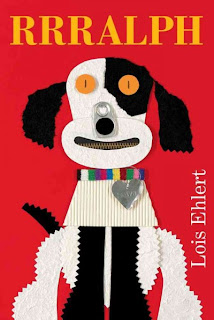Summary of the Day:
I loved this shortened version of the reading.
I finally decided on my visual metaphor. As a teacher I want to be like a river guide. I might know the route, but I certainly can't prepare for everything or see everything that will come my way or my students way and I definitely can't row our raft and steer without their help. I am a guide, but I can't make us go anywhere without everyone's cooperation.
Learning occurs when I guide my students to their own answers, not when I spoon feed them facts.
Today in class we focused on making paper puppets with movable joints. I am a little gluingly challenged so my puppet struggled its way to paralysis as the glue dried, but you can't tell from the picture.
This was a sweetly simply process.
First, cut out shapes for the different body parts in cardstock or a recycled file folder. I chose triangles for feet and legs, half moons for arms, a trapezoid for a skirt, a rectangle for a robot like midsection, and a long skinny neck with a diamond for a head on top!
Next, use a nice hole punch to punch holes in the tops and bottoms of the body parts. I say "nice" hole punch because the sticky and dull ones can crinkle/rip the paper.
Third cut out small dime sized circles of file folder paper. Arrange the joints so that all the holes that you punched are covered by another body part.
Fourth, get some white Elmers glue and squeeze a good amount onto a piece of paper. Using a toothpick apply a small drop or two of glue into the holes and cover with a paper circle. Using the eraser of a pencil, press down only on the center of the paper circle and hold for 30 seconds. Move your joint around to make sure it worked.
To create awesome faces or other designs on the puppet try using a Chartpak "blender" pen to rub an image of a celebrity or other onto your paper puppet. cutout the image you want, place it on the puppet and arrange it how you want, and then color over it with the chartpak pen until the image begins to look really dark.
We also discussed some social practice artists and their methods. I was quite taken with the Camouflage artists but I was also really touched by the Vik Muniz film "Wasteland and his artwork depicting people who live off landfills in Brazil
Extensions: The important take away from a lesson like this is that art is an experience! I want my students to go out and have an art experience.
Applications:
In the classroom we could arrange our paper puppets together to show that we are a community of learners and that everyone is included. Another application that Dr. Barney mentioned, which I love, is Flat Stanley! Flat Stanley is socially engaged art and who knows where a flexible Flat Stanley could go. I remember as a little girl sending my Flat Stanley to Tokyo Japan where my uncle lived and being amazed at the pictures that were mailed back. I wish I still had them! I want my students to have experiences like that to help them see how big and diverse the world is.


















